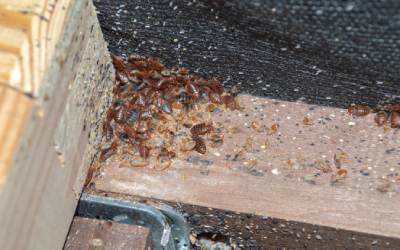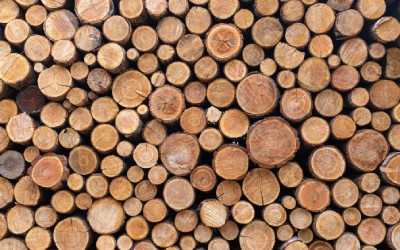The warm weather of New Mexico makes it a haven for insects year-round. While there are steps you can take to stop pests from taking over outside your home, preventing bed bugs is a different matter. Bed bugs can spread rapidly and take over your home quickly.
Sometimes it isn’t easy to identify bed bugs or realize you have an infestation. Ultimately, keeping an eye out for signs of an infestation can help you identify the problem before it gets out of hand. Professional services provided by Pest Defense Solutions eliminate a bed bug infestation before they are able to take over your home!
How to Identify a Bed Bug
Bed bugs are small, flat, oval-shaped insects. They are reddish-brown in color and are about the size of an appleseed. Comparatively, they appear larger after feeding. Because they are nocturnal and feed at night while you are sleeping, you may not notice bites right away.
Bed bug bites can be easily mistaken as bites from another type of insect such as mosquitoes or chiggers. Although bed bugs don’t transmit any diseases through their bites the area can become itchy and swollen. The American Academy of Dermatology recommends you contact a dermatologist if you have multiple bites, if they blister, are pus filled, or are showing other signs of infection or an allergic reaction.
Where to Check For Bed Bugs
Bed bugs can be found anywhere people reside. Since these pests are nocturnal, they feed at night and will most often hide where humans and mammals sleep. They are called bed bugs for a reason!
Common infestation signs include:
- Spots on Your Sheets: After feeding, bed bugs often leave behind small blood stains on bedding, mattresses, furniture, or even your pajamas.
- Bed Bug Excrements: Yes, it is gross to think about! This pest leaves droppings that look like small dark spots the size of a period. These spots may be concentrated in one area or scattered across your sleeping area.
- Shed Skins: As a bed bug grows, they shed their skin. They often leave their skins and hide in seams and crevices of mattresses, bedding, carpet, or floorboards.This is a clear sign of an infestation.
How Do Bed Bugs Get Into Your Home
Considering bed bugs are small and hide themselves well, you can unknowingly bring them home with you. Any area frequented by the public are locations where bed bugs can occur. Some common places include:
- Traveling: These hitchhiking insects can easily latch onto your luggage, clothing, and other belongings when traveling. If you stay in a hotel or other lodging area that has bed bugs, you may accidentally bring them home with you.
- Used Furniture: They love to hide in used furniture, especially mattresses and upholstered items. If you buy secondhand furniture without inspecting it thoroughly, you may carry bed bugs into your home!
- Shared Spaces: Bed bugs can move between homes and apartments through openings like wall voids, floor cracks, and even the ventilation system.
How to Get Rid of Bed Bugs
DIY remedies or treatments do little when it comes to eradicating a bed bug infestation from your home. At the first sign of bed bugs, call the extermination experts with Pest Defense Solutions. With over 15 years in the Albuquerque area, we are the leaders in bed bug extermination. We thoroughly inspect your home and formulate a plan that is suited to you and your family’s needs. The sooner you call a professional, the sooner you can take your home back.



